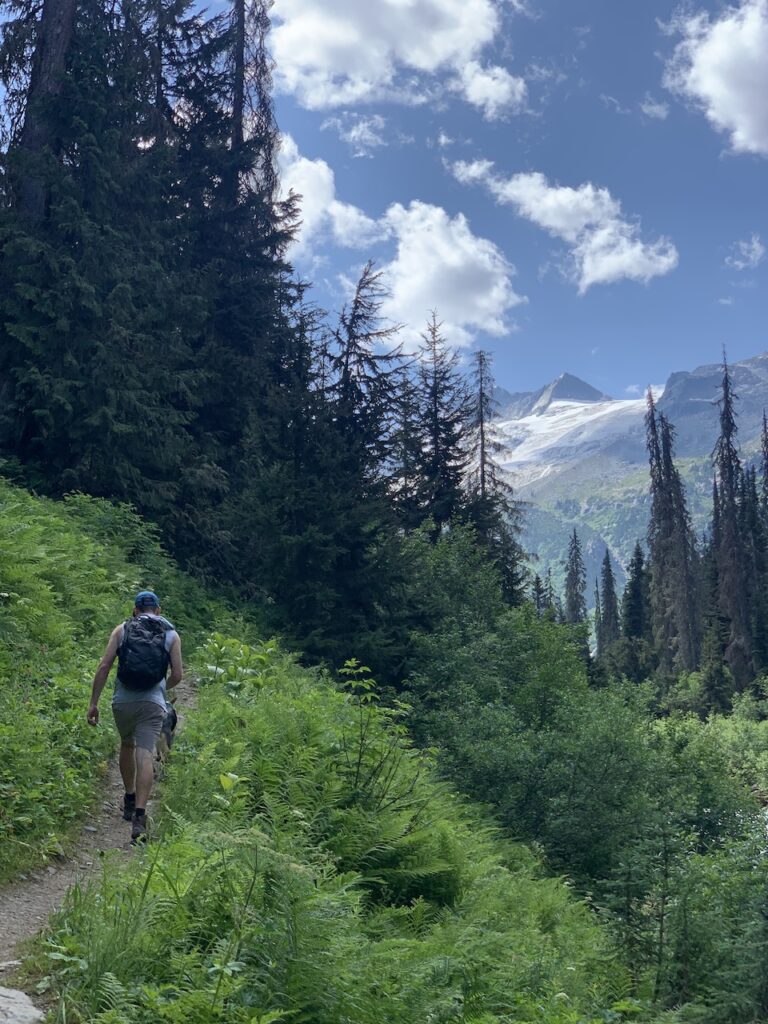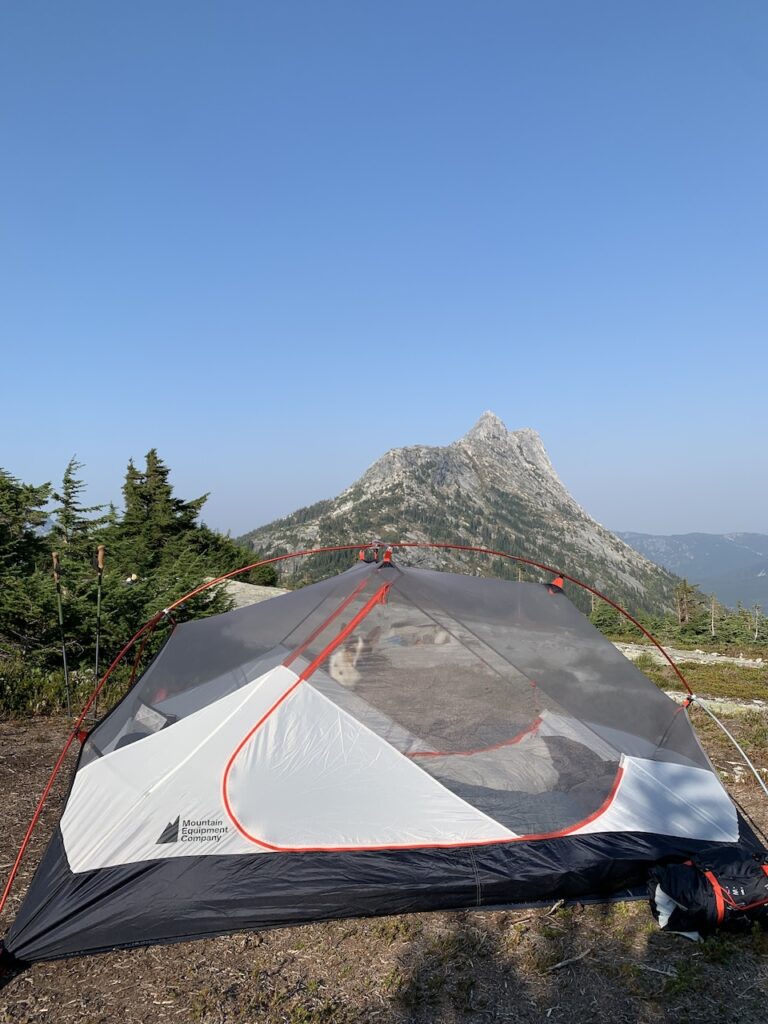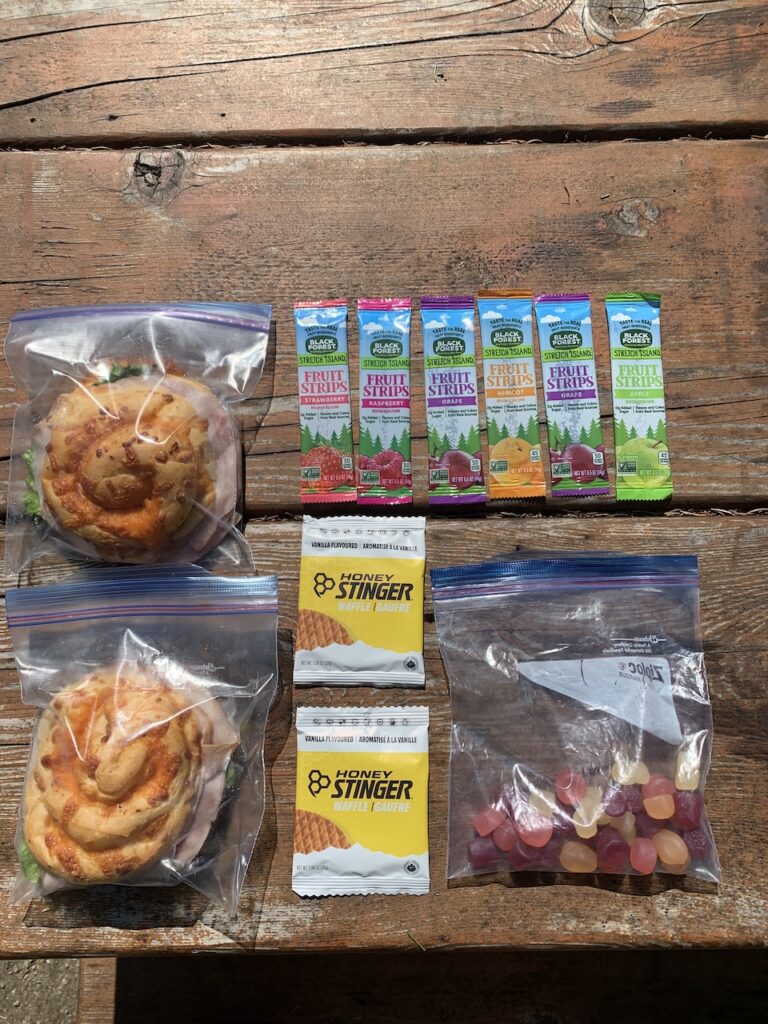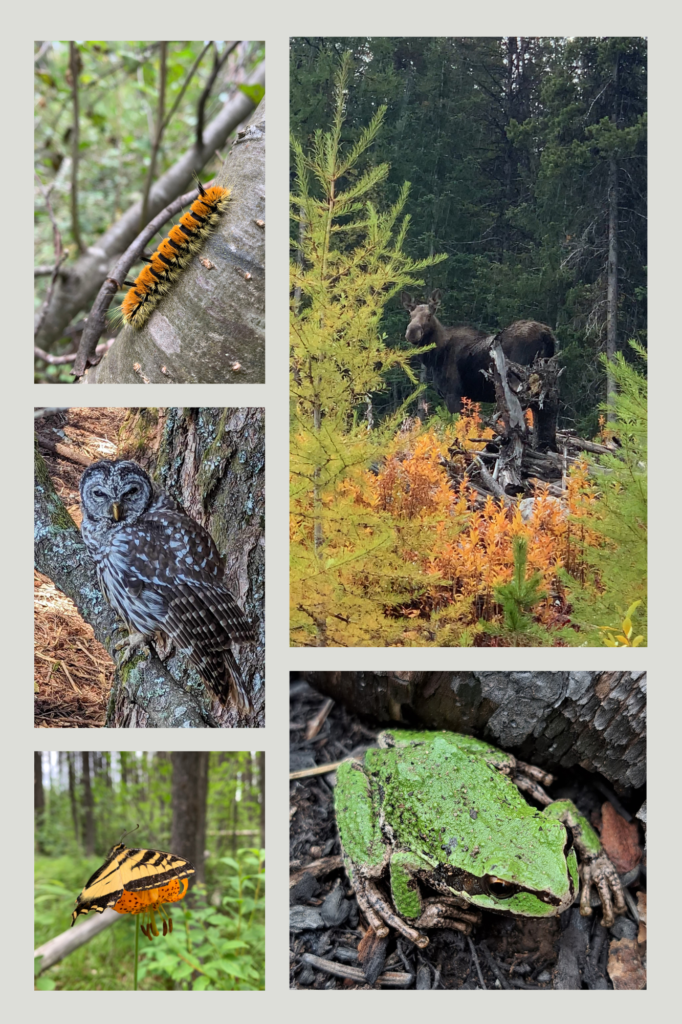As outdoor adventure enthusiasts, we’re always busy exploring. Whether it’s in our backyards, somewhere close home or a far away grand adventure. We have the privilege of prioritizing our time to be spent soaking up the beauty of the natural world. With this privilege comes the responsibility to preserve and protect our natural playground.
Let’s delve into the principles of “Leave No Trace” to understand how we can minimize our impact while hiking, camping and spending time outdoors.

Leave No Trace: A Guiding Philosophy
The Leave No Trace principles are not just a set of rules, but rather a philosophy that encourages us to enjoy nature responsibly, ensuring that our presence doesn’t compromise the environment and the wildlife for future generations.
1. Plan Ahead and Prepare
Don’t be a poor planner!
Well before the scheduled day of your adventure, be sure to research your route, know the rules and regulations, and obtain all necessary and required permits.
Effectively researching and planning your trip will help to ensure your safety, minimize damage to the environment, boost your confidence and will make the trip far more enjoyable!
When planning and preparing for your trip to follow the Leave No Trace principles, ask yourself these questions:
Location?
- Where is my trip and what type of landscape is it in?
- How long is the trip and what is the terrain like?
- What season will it be during my trip and what have the weather conditions been like there recently?
- Where is the trailhead and the directions to get there?
- What type of vehicle do I need to access the trailhead? Is there parking?
- What permits do I need? How much are they? Where do I get them?
Gear and Equipment?
- What will I need to pack to prepare for potential extreme weather or emergencies?
- Do I have all the necessary equipment and clothing?
- Do I have a map of the area?
Meal Planning?
- Is this a day trip or an overnight trip?
- Can I downsize the commercial food packaging in any way?
Hazards?
- Are there any potential hazards – such as grizzly bears in the area?
- How many people are coming on this adventure?
- What is each person’s skill level?

2. Only Travel and Camp in Designated Areas
Whether you are walking, running, hiking or camping, make sure that you are travelling over the land in designated areas. Our main goal when following Leave No Trace principles is to avoid damaging, trampling and/or changing the land, vegetation and waterways as much as possible.
Also, keep in mind that most of the landscapes that we adventure through are extremely sensitive ecosystems.
Keep the following in mind when you’re hiking and camping:
- Stay on designated hiking trails
- Camp in designated campsites
- Respect any signage you see
- Camp a minimum of 200 feet from riparian areas (lakes, streams, creeks)
- Do not alter campsites
3. If You Pack It In, Pack It Out
Leave No Trace principles will always remind you to consider the impact you may have and how it will affect the land, water, wildlife and the other people adventuring after you. The biggest impact we have on these things is our waste. It’s no secret that humans create a considerable amount of waste, whether it’s garbage or solid human waste. It’s our responsibility to dispose of everything properly.
When following Leave No Trace principles, this is how to deal with waste:
Dealing with garbage:
- When meal planning, minimize garbage by re-packing commercially packaged food and only bringing the necessary parts with you (ie: a box of granola bars – only pack the individually packaged granola bars and not the cardboard box)
- Bring a “garbage bag” with you on your trip – preferably an air-tight sealable bag like a Ziplock
- Do not leave any garbage behind and if you see litter, pick it up and pack it out
- Do not leave leftover food behind, either eat it all or pack it out – leaving food behind could attract wildlife and endanger future visitors or leaving food behind to biodegrade could introduce foreign nutrients to soils that don’t need it
Dealing with solid human waste:
- Always pack a small metal shovel/trowel and toilet paper in sealed bag
- If there are no designated pit-toilets, always dig a “cathole” no less than 6″ deep
- Always make sure to go to the washroom far away – at least 200 feet – from riparian areas (lakes, streams, creeks, wetlands)
- Always cover up your “cathole” and if you can, put a rock on top of it
- Either bury your used toilet paper or pack it out in a sealed bag
Washing yourself and your dishes:
- DO NOT CONTAMINATE THE WATER
- Never wash anything directly in a riparian area (lake, stream, creek, wetland)
- Use a pot to collect water, bring it far away from riparian area and your campsite – at least 200 feet – and wash yourself and/or your dishes
- Strain the wastewater out of the pot and pack out any food waste or bury it deep in a “cathole”
- Even if your soap is labelled “biodegradable” it can still affect the health of the water
- Body lotions, sunscreen and insect repellant also affect the health of the water

4. Leave It Where You Found It
It’s always so tempting to bring a piece of the adventure home with you! However, that rock, plant, feather, stick or nest is apart of the landscape and plays a role in the overall health of the ecosystem.
Did you know that there’s a specific fly that lays it’s larvae on moose antlers that have been shed?! So cool!
If you took the moose antler home with you, you’d be taking away an essential lifecycle stage of the Antler Fly.
5. Be Smart About Fire
Campfires are a staple activity when it comes to camping! There’s something so rewarding about spending a whole day adventuring around outside then cooking and hanging out around your campfire while the stars start to sparkle above you.
If you’re going to have a campfire, be mindful of their lasting environmental impacts and make sure do follow these Leave No Trace principles:
- Always check fire bans and fire restrictions
- When possible, opt to cook dinner on your cookstove instead of your campfire
- Only use established fire rings where permitted
- Source local firewood – bringing firewood from other locations could introduce invasive plants or destructive bugs
- Never leave a campfire unattended and make sure to fully extinguish your fire when you’re done with it
6. Always Respect Wildlife
Respecting wildlife will not only ensure your safety while adventuring in the great outdoors but will also keep the wildlife safe and minimize the impact on their natural habitat.
It’s incredibly important that wildlife does not get used to having humans around or begin to associate humans with having food. And this goes for all wildlife; some the small and mighty rodents to the big, lumbering bears. If a bear became desensitized to the presence of humans and no longer feared them because it knew it would scavenge food from them, this could increase the chance of fellow hikers and campers having a bear encounter or attack and the bear would have to be relocated or euthanized.
Make sure to follow these Leave No Trace Principles regarding wildlife:
- Always admire wildlife from a distance, we do not want to allow wildlife to become acclimated to the presence of humans
- Do not approach or follow wildlife
- Never feed wildlife
- Always be sure to properly store your food when camping – store food and toiletries in bear canisters, bear safe lockers or bear hangers (most campgrounds have these)
- Always keep your dogs leashed or leave them at home – dogs can attract wildlife
- Be aware of wildlife life cycles – are you adventuring into their natural habitat during mating season or when they’re raising their young?

7. Be Considerate of Other People
Have you ever been camping and been attempting to sleep while a neighbour is playing loud music? Or they’re staying up late and having drinks? Or they’ve had too many drinks and now they’re fighting?!
I have an it’s the worst! Don’t be those people 😂
When you’re out hiking, camping, backpacking or just spending time in nature, there will probably be other people out there too. Be considerate of others on the trail and in campsites.
Follow these Leave No Trace inspired tips to be courteous of other people while adventuring
- Hikers going uphill have the right of way, so if you’re a downhill hiker, try and remember to step off the trail for them and let them pass
- Bikers yield to hikers
- Everyone on the trail – hikers and bikers – yield to horses
- Be mindful of noise – don’t play music from a portable speaker when hiking, don’t yell, and respect quiet times in the campsite
- Keep your dog leashed and under control on the trail and in the campsite
All in all, just be a good person and respect nature and its wildlife!
If you want to read more about Leave No Trace principles, check out their website – they even have courses!
